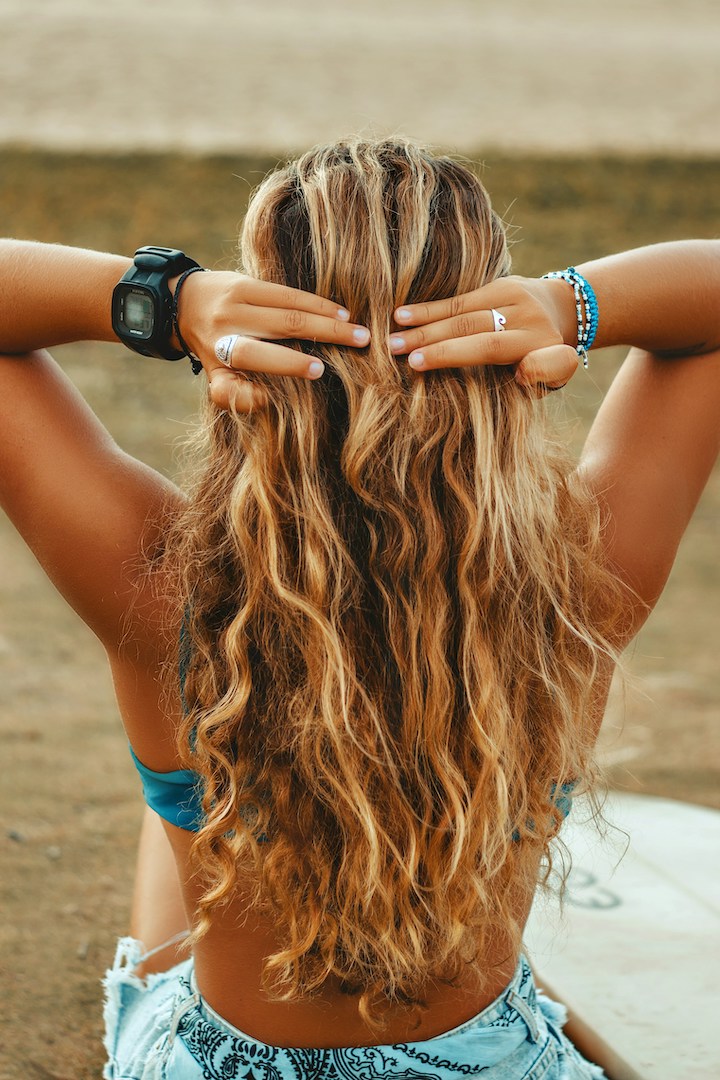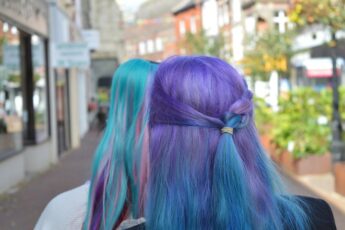Let’s get real. We’ve both been there—standing before a shelf of hair masks, selecting the one with the prettiest jar or the most outlandish promises. Maybe it promises “deep repair” or “moisture bomb.” Maybe it even smells like a tropical paradise. But the thing that I learned the hard way is that what really matters is what’s on the inside.
If you’re like me, you’ve probably used a whole load of hair masks and still not know why your hair still doesn’t feel any different afterwards. The reason for this is that unless proper ingredients are used, your hair’s not receiving what it needs. So today I’m going to run you through the hair mask ingredients that actually do make a difference—the ones putting in the work, not just the words.
Grab yourself a hot cup of tea. Let’s do this.
Table of Contents
Why Ingredients Matter More Than the Label
This took me years to realize. I used to pick hair products based on how pretentious they sounded or whether they had the word “miracle” plastered on the label. But my hair still felt dry. Or greasy. Or straw-like.
That’s when I started reading the labels. And trust me—it changed everything.
After I finally knew what the ingredients did, I stopped wasting money. I stopped guessing. I started listening to what my hair actually needed. And when I started choosing masks based on ingredients and not claims, my hair finally became healthy, strong, and soft.
That’s why this matters. Not so that you must become a chemist, but so you can have some basic idea of what you’re doing and make improved choices. And your hair will thank you.

Natural Oils That Actually Work
Let’s start with the basics—oils. They are some of the most concentrated ingredients in any hair mask. But not all oils are created equal. Some penetrate pretty deeply. Others sit on the surface. Some are heavy, some are light.
Here are the ones that I find myself returning to time and again:
Coconut Oil
If your hair is breaking, dry, or brittle, this one might be your new best friend. Coconut oil can actually penetrate the hair shaft and reduce protein loss. Good news – it’s building your hair from the inside out.
But here’s the catch—not every hair type loves coconut oil. If you’ve ever used it and your hair felt stiff or waxy, you’re not alone. Try it in a small amount first and see how your hair reacts.
Argan Oil
This is like liquid gold. It is not oily, and it gives the kind of shine where you can’t help but flip your hair slowly in stop-motion. Argan oil contains vitamin E and fatty acids. It is especially wonderful for smoothing frizz and making your hair soft.
When I use a hair mask with argan oil, I find my hair more manageable for days thereafter.
Castor Oil
This is thick stuff. And sticky. But don’t worry—this is a scalp rescuer. Castor oil is all about helping with thickness of hair and prompting growth. It has ricinoleic acid, which will help circulation to the scalp.
I like to add this to DIY masks when my scalp feels like it’s been neglected. Just make sure to really wash it out.
Also Read: The Rarest Hair Color in the World (And What It Says About You)
Protein Boosters Your Hair May Be Begging For
Ever get the sense that your hair looks fine but feels weird? Like it’s soft but…incomplete? That might be because it lacks protein.
Your hair is made up of keratin, a protein. Over time, heat styling, the use of color, and even brushing can break that down. Which is why protein-based ingredients are your best bet.
Hydrolyzed Keratin
This is one of those ingredients you’ll want to remember. When keratin is broken down (aka “hydrolyzed”), it can actually stick to damaged areas in your hair. It fills in the gaps and strengthens the strand. If your hair is breaking or snapping easily, look for this.
I try not to overdo it with keratin, though. Too much can make your hair stiff. Once a week is usually enough.
Silk Proteins
They look and feel as great as they do. Silk proteins are amazing at smoothing and giving shine. They soften your hair, and they’re mild enough for almost every hair type. If you’ve got frizzy or rough hair, this is a great place to begin.
You’ll be able to feel it most when you run your fingers through your hair. It just glides on through.
Wheat Protein
This one’s great for elasticity. You know when you grab a strand of wet hair and it just stretches, then snaps? Wheat protein will prevent that from occurring. It builds up without hardening your hair.
I use this when my hair’s feeling limp or like it’s lost its bounce.
Humectants That Draw Moisture Right Into the Strands
Occasionally the issue is not damage—it is dehydration. That is where humectants are needed. These products draw water and suck it into your hair.
Glycerin
You’ll find this in all manner of hair products. It draws moisture from the air and transfers it to your hair. But here’s the thing: if the air is actually dry, it’ll draw moisture out of your hair instead. So, it’s great for humid weather—but not ideal in dry climates.
I do still use it, but I am mindful of what my hair does depending on the season.
Honey
Sticky, yes. But oh so very worth it. Honey is a natural humectant and adds a beautiful softness to your hair. I love to use it in homemade masks mixed with a drizzle of olive oil. Just be careful not to use too much or you’ll be in the shower for a good long while trying to get it out.
Aloe Vera
This one’s a gem. Aloe not only moisturizes—it soothes your scalp too. If your scalp is itchy or dry, this can calm the issue in a flash. I put it straight on my scalp before applying a hair mask. It leaves me with a fresh, tingling sensation that I love.
Butters That Coat and Heal
Oils and humectants are great, but sometimes you want something with a little more oomph. That’s when butters come to your rescue. They coat your hair and seal in all the goodness.
Shea Butter
This stuff is seriously hydrating. It’s great for dry or curly hair, especially if your ends are crunchy or your curls have lost their shape. Shea butter is rich, though—so I use it mostly mid-length to ends.
If you have fine hair, use it lightly. If you have coarse or textured hair, you can use it more heavily.
Mango Butter
It is the less heavy sibling of shea butter. It moisturizes but not the weight. I use this when I want moisture without the heaviness. It smells amazing too.
To avoid buildup, I double shampoo after a butter mask every time. Night and day difference.
Hair Mask Ingredients to Be Careful With
Not every “natural” ingredient is good for every head of hair. Some can irritate the scalp or just not suit your hair type.
Essential Oils
I’ve had love-hate relationships with these. Peppermint oil can feel tingly and refreshing. Tea tree oil helps with dandruff. But use too much, and your scalp might burn. Always dilute these in a carrier oil or mask base.
Apple Cider Vinegar
Some people swear by it, but it can be harsh. If you have a sensitive scalp, it might not be worth the gamble. If you do use it, always dilute it thoroughly and rinse thoroughly.
DIY Warnings
I love making my own masks, but not all of your kitchen ingredients are safe for your scalp. Cinnamon, for example, can give you a severe reaction. Always, always patch test first.
How to Read the Ingredient List Without Losing Your Mind
The trick is simple. Glance over the first five or seven ingredients—that’s where the formula’s potency is. If something amazing like argan oil is far down at the end, it’s probably just tossed in as a gimmick.
And believe me? Sometimes, less is better. A shorter ingredient list equals fewer chances for irritation and more of what you actually need.
If unsure, go slow. Add a new ingredient at a time and see how your hair reacts.
You Can Also Read: Fine Hair Volumizing Techniques That Actually Work
DIY-ing vs. Store-Bought
No wrong or right here. I do both, depending on available time and what my hair needs.
When to DIY:
- You need full control over ingredients
- Your scalp is sensitive
- You’re in an experimental mood
When Store-Bought Is Best:
- You’re short on time
- You like something mess-free
- You need stronger, lab-tested results
There is something pleasant about making your own mask. But let’s get real—not everyone has the time to smash up avocados on a Wednesday night. And that’s okay. Just try to see past the label and find one that’s full of the ingredients we talked about.
Conclusion
Hair masks don’t need to be a science experiment. They should be like self-care, not a chemistry test. As soon as you know what these ingredients actually do, you’ll never read a label the same way any more.
You don’t need to own twenty products. You don’t need five. You just need the one that works right for your hair.
So the next time you’re shopping for a mask—or making your own at home—you’ll know exactly what to do. And you’ll be able to feel confident about every strand receiving what it really needs.
You’ve got this.
Frequently Asked Questions
Can I use a hair mask every day?
Nope, and you shouldn’t. Most hair types can only handle a mask once a week. Too much can weigh your hair down or interfere with your moisture-protein balance.
How long do I leave a hair mask on?
10-30 minutes should do the trick. Leaving it on longer doesn’t always equal more dramatic results—especially if it’s protein-based.
Do I apply a hair mask before or after shampooing?
Generally after shampooing and before conditioning. Although, when I’m doing a DIY oil mask, I personally like to apply them on dry hair and wash them out.
How do I know if a mask is too heavy for my hair?
If your hair feels limp, greasy, or flat when rinsed, the mask is probably too rich. Apply less or choose lighter ingredients like aloe or silk protein.




